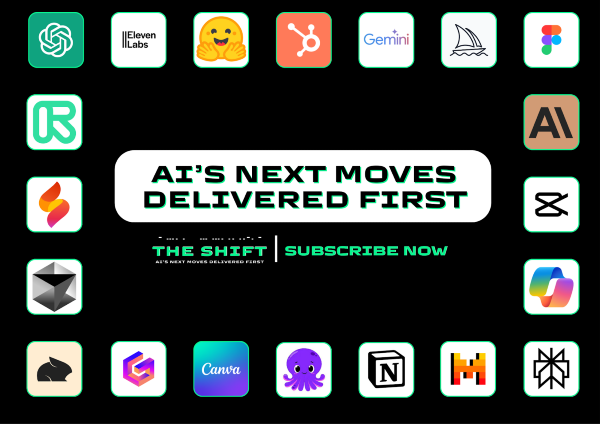Lightspeed Intent Highjacking
🆚 Contrast Hooks: The Fastest Way to Hijack a DTC Buyer’s Brain
Welcome to a space where every edition delivers insights, strategies, and inspiration to fuel your advertising brilliance. 🤯
🆚 Contrast Hooks: The Fastest Way to Hijack a DTC Buyer’s Brain
When your product isn’t famous, your first job isn’t to impress, it’s to disrupt.
Contrast hooks work because they break the brain’s pattern recognition loop. In a feed of polished perfection, showing visual chaos for half a second makes the viewer stop, squint, and try to resolve the confusion. That’s when you slide in with clarity, and conversion.
1. Contrast Is the Shortcut to Curiosity
The human brain is hardwired to detect difference before meaning. That’s why chaos → clarity edits (think: messy kitchen → sparkling after using your product) spike attention faster than any smiling testimonial ever will.
What matters isn’t the polish, it’s the gap. The bigger the emotional or visual gap, the more pull the second image has.
2. Format Examples That Win Scroll-Stop
- Tech/Cosmetics: Start with a bad user interface, outdated packaging, or skin irritations, then snap to your product.
- Wellness/Fitness: Use physical clutter (pill bottles, paper notes, wires) and collapse into clean, minimalist presentation.
- Fashion/Beauty: Go from ill-fitting, wrinkled looks to sharp, color-blocked shots. Let the glow-up speak.
- Food/Beverage: Show bland, dry meals, followed by dripping sauces or satisfying crunch closeups.
This format isn’t new. What’s new is how fast it needs to hit.
3. Split-Second Rules for Execution
- Keep the first shot slightly ugly or even jarring, unedited footage wins.
- Use audio to exaggerate contrast (noise → silence or static → clean punchy beat drop).
- Don’t explain, show. Text should only amplify the hook, not explain it.
Your goal? Tension in 1.2 seconds, satisfaction in 1.4.
4. Don’t Just Show ‘Before vs. After’, Show ‘Problem vs. Identity’
The most advanced contrast hooks aren’t visual at all, they’re emotional.
It’s not about bad-to-good. It’s about who they used to be… and who they could become.
Use overlays like:
- “You → After 8 hours of Zoom + 3 Slack meltdowns”
- “You → After 2 drops of this serum and no emails for 12 hours”
- “You → Finally waking up without dread”
The hook isn’t the transformation. It’s the moment they recognize themselves.
Why It Matters
Most ads try to convince. Contrast hooks don’t. They jolt someone into awareness — and then reward them with clarity. That’s what makes it feel emotional, elegant, and effortless… even when it’s only 3 seconds long.
Together with Shift
You’re Not Behind on AI. You’re Just Learning It Wrong.

AI is evolving rapidly. But most people aren’t falling behind because it’s too fast.
They’re stuck because they’re learning AI like a subject in school. And AI doesn’t play by textbook rules.
At The Shift AI, we don’t just tell you what’s new. We show you how to:
✅ Rethink workflows with an AI-first mindset
✅ Automate like a hacker, not like you’re replacing a task
✅ Ask smarter questions that unlock better results
If reading this made you pause, wait till you see what happens when you apply it.
Subscribe now and unlock weekly updates on 2000+ AI tools, 300+ high-impact prompts, and free AI strategy courses.
Start shifting from knowing AI to living it.
📽️ Reel of the Day

How the Reel Works
The reel mimics the iMessage interface, “Hey girlyyyyyy, what are you wearing today?” which instantly taps into daily, casual phone behavior. This makes the viewer feel like they’re part of a real conversation, not a forced brand promo.
When the user responds with “Wearing a set from J.Lindeberg,” the brand isn’t mentioned like an ad, it’s shown as a natural response to a friend’s curiosity. The caption and visuals reinforce it, but subtly.
The setting is genius: the influencer walks in front of a J.Lindeberg poster. It’s meta, the brand is both her backdrop and her outfit. This doubling down on presence means you don’t even need a CTA; the visual imprint has already done the brand memory work.
At the end, she takes a selfie and sends it in a chat bubble, closing the loop in the story. It mirrors a behavior pattern every viewer understands: you share what you wear when you feel good. This micro-story turns the outfit into a self-expression artifact, not a sales pitch.
Broader Insights:
It answers the exact question many followers DM influencers: “Where is that from?” It embeds the brand name twice (billboard and text) without making it feel promotional. It uses outfit-as-content, not content-for-outfit, flipping the typical influencer-brand structure.
🪩Events
Join Modash’s free webinar on June 18th with Piia Õunpuu, Global Influencer Marketing Manager at Bolt. She’ll share how her team stacks creators, targets specific regions, and scales smarter without wasting budget.
Save your spot now and access the system behind top-performing brands!
Can’t make it live? No worries, register anyway to receive the full recording.
Thanks for reading this edition! Keep pushing boundaries, testing ideas, and staying inspired. See you in the next edition with more ways to ignite your marketing success. 🥰